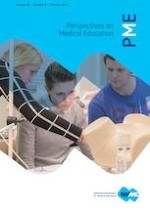Introduction
“Poetry is thoughts that breathe, and words that burn”Thomas Gray
What is poetic inquiry?
Why do we need poetic inquiry?
Poetic inquiry as part of phenomenological inquiry
Types of poetic inquiry
Type of poetic inquiry | Description | Proposed benefits of the approach | Examples of research employing approach |
|---|---|---|---|
Participant-voiced poetry | Sometimes referred to as ‘vox participare’, ‘found poetry’, or ‘data poetry’. Created from research transcripts. Researchers shape the words of participants’, redisplaying their own words in poetic form to convey meaning. There can be significant variation in the degree of poetic licence taken by researchers. Some portray participant words unchanged, in chronological order as they appear in transcripts; others modify word order and punctuation more freely, blending participant and researcher voices. May involve one or multiple voices Includes participatory action-research variants, where researchers and participants co-construct poems. Increasingly popular is the approach digital poetic inquiry, where digital text is used to create found poems May be used as a method of data presentation, as an elicitation technique within interviews, or as a method of member-checking interpretations with participants | – Preservation of participant voice, especially useful for conveying the experiences of individuals who have been previously overlooked within academic discourse. In this way, this approach can challenge dominant ideologies within a field – Moves beyond simple description of events and experiences towards human struggles of being and becoming – Can challenge researchers’ biases and preconceived judgments of underserved populations – Insight afforded into complex psychosocial situations and processes can engender empathy – Emotive impact of poetic representation – Increased accessibility of findings to wider audiences | Brown CS. The use of poetry in qualitative post-hoc analysis. J Poet Ther. 2018;31:107–12 |
MacNeil C. The prose and cons of poetic representation in evaluation reporting. Am J Eval. 2000, 21:359–67 | |||
Poindexter CC. Research as poetry: A couple experiences HIV. Qual Inq. 2002;8:707–14 | |||
Autobiographical poetry | Sometimes referred to as auto-ethnographic poetry, or ‘vox autobiographica’. Poetry about the experience of the researcher to gain insight into the research process. Constructed from researcher field notes or journal entries | – Poetic inquiry is a method of embodied interpretation. In all its forms, writing helps researchers find out more about themselves and their topic of inquiry. Autobiographical poetry, in particular, can aid researcher reflexivity, and advance the development of new approaches or methods | Naidu T. Autoethnographic realisation of legitimacy of voice: A poetic trail of forming researcher identity. Qual Soc Res. 2014;15: https://doi.org/10.17169/fqs-15.1.1996 |
Furman R. Using Poetry and Narrative as Qualitative Data: Exploring a Father’s Cancer Through Poetry. Fam Syst Health. 2004;22:162–70 | |||
Rapport F, Hartill G. Crossing disciplines with ethnographic poetic representation. Creat Approach Res. 2012;5:11 | |||
Research poetry | Some have argued research poems are a form of autobiographical poetry. Many, however, consider this a separate type of poetic inquiry, which involves the creation of poetry from a field’s literature base or theory. It is sometimes termed ‘vox theoria’ | – Can be used within critical poetic inquiry to cast new light on the dominant ideologies of a field and explore power – Can act as a form of review, synthesising bodies of literature or discourse surrounding a theory into a more accessible format | Lahman MK, Richard, VM. Appropriated poetry: Archival poetry in research. Qual Inquiry. 2014;20: 344–55 |
Prendergast M. ‘Shaped like a question mark’: found poetry from Herbert Blau’s The Audience. Res Drama Educ. 2004;9:73–92 | |||
Prendergast M. Found poetry as literature review: Research poems on audience and performance. Qual Inq. 2006;12:369–88 |
How to ‘do’ poetic inquiry
Glesne’s method of poetic transcription
Gilligan et al.’s ‘Listening Guide’ method
Steps of the listening guide | Description |
|---|---|
Step 1: Listening for the plot | During step 1, the researcher listens for the plot—for what is happening in a narrative. Gilligan recommends considering who is present, who is missing, the major and minor themes, emotional moments, prominent imagery, the stories that are told, breaks in the narrative, and the researcher’s embodied response to the participants’ narrative |
Step 2: Constructing I poems | During step 2, the researcher reviews and underlines each first-person singular “I” pronoun utilised by the participant in their transcript. Subsequent accompanying words should also be underlined—there is no set number of words that should be included alongside the “I” pronoun, but the accompanying words should provide context as to what is meant. An I poem is then constructed by compiling all I statements in the same order they appear in a participant’s transcript. Each I statement is placed on a separate line. Sometimes researchers take a degree of poetic licence, and incorporate additional words to like ‘me’, ‘my’ and ‘myself’ to expand their analysis. The purpose of this step is to draw attention to the ways in which a participant speaks about themselves |
Step 3: Listening for contrapuntal voices | Step 3 involves listening for the participants’ contrapuntal voices, the different voices present within their narrative. This step considers not only the content of a narrative, but tensions within an individual, harmonies or dissonances, and what is unsaid, or may be silenced. Contrapuntal voices have a relationship to one another, and this should be a focus of interest to a researcher—how do the multiple voices in one participants’ narrative interact? Gilligan recommends that a minimum number of two voices be sought in each narrative |
Step 4: Composing an analysis | Step 4 involves the synthesis of all previous steps, and researcher interpretations, to produce an analytical report |
